Nothing cheers up folks on a video conference more than a good tune, well maybe puppies and kittens, but tunes come in a close second.
As the host of a video conference meeting, we may want to stream some music as people trickle into the event. Music can set the tone for the rest of the meeting, whether it be ambient EDM or thrashing death metal.
In this post, we’ll see how we can use an application on macOS called Loopback to create a virtual device that combines both our microphone and our favorite music streaming applications.
Purchasing Loopback
Rogue Amoeba develops an application called Loopback. It allows us to pass audio between applications by creating virtual input and output devices. We’ll need to purchase the app, but they do offer a trial for those interested. The podcast bundle they offer is excellent for anyone looking to record and edit podcasts, and it includes Loopback.
Download Loopback to get started.
The Set-Up
After we install and start Loopback, we will need to create a new virtual device. We can name it anything. In this example, let’s call it Sweet Tunes.
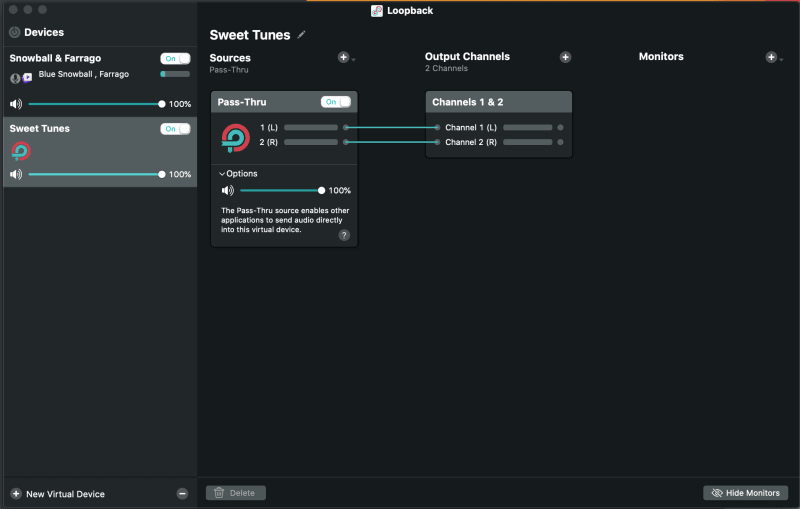
We then need to remove the Pass-Thru source. It allows us to randomly pipe apps into this source by treating it as both input and output. We could leave it, but it is unnecessary for our use case. Select the Pass-Thru source and click the delete button on the bottom. Our screen should now only have one Output Channel.
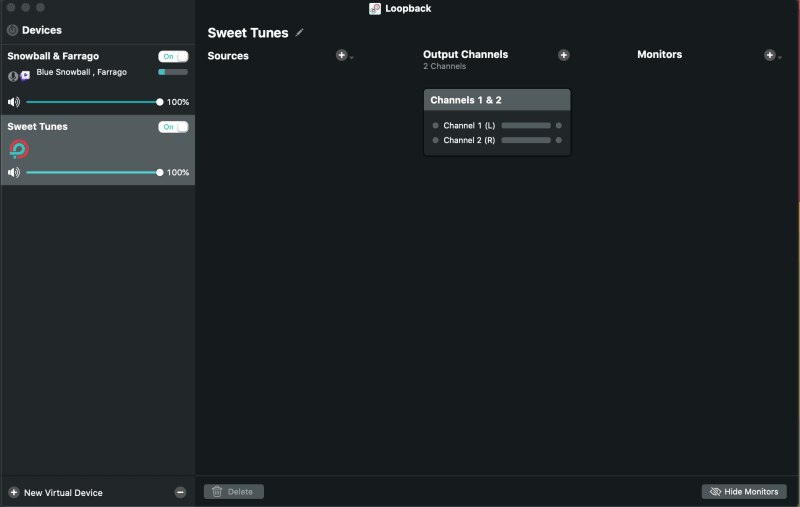
We now need to add our Input Sources.
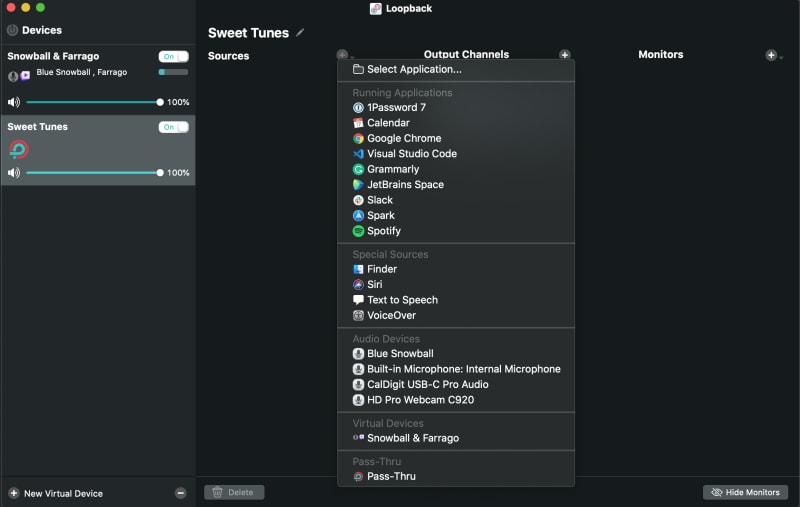
In this case, we will add a Blue Snowball Microphone and Spotify. Adjust for your particular system configuration.
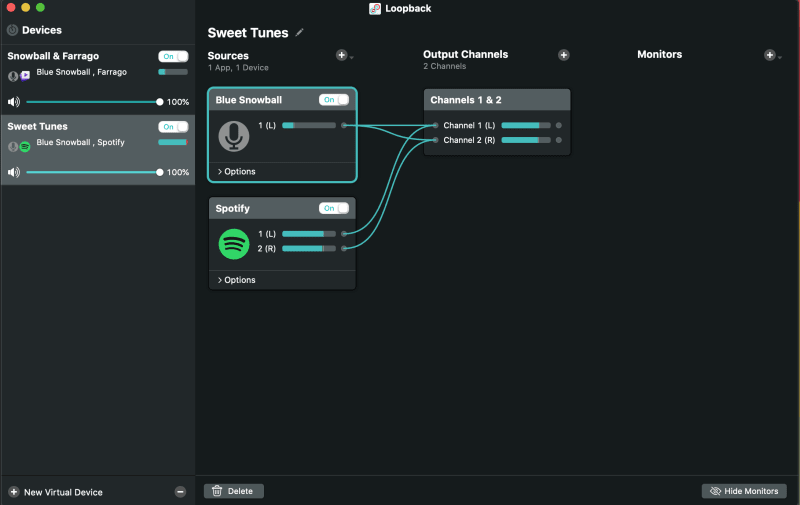
We’re almost done!
We also want to hear the music come through our primary audio output. We need to add a new Channel 3 & 4 and a new Monitor.
We will need to connect Spotify to Channels 3 & 4 and our microphone to Channel 1 & 2. We can do this by dragging from the dots on our source to the output. We will see a neon blue line. We can also delete these lines by selecting one and clicking delete on the bottom.
Once we have the channels wired up, we need to create a new monitor for our primary audio output and pipe Channels 3 & 4 to the monitor. In this example, our monitor is the Heaphones.
It helps to play music during this time, and we should hear the audio cut out and back in.
The last step is to delete the connectors of Channels 1 & 2 from the monitor. We don’t want to hear our voice piped back at us through the primary audio output.
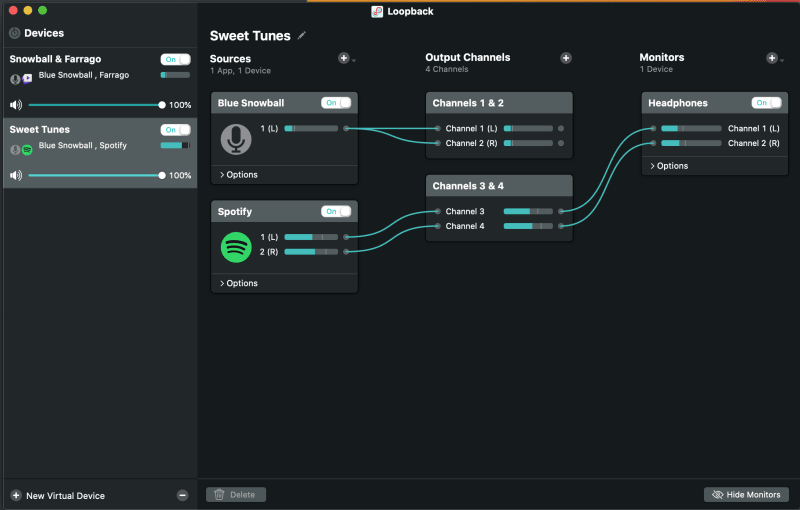
Now we can use Sweet Tunes as the input to our favorite video conferencing software as if it were our microphone. I hope your team enjoys and appreciates the sweet tunes.

 Photo by
Photo by 


